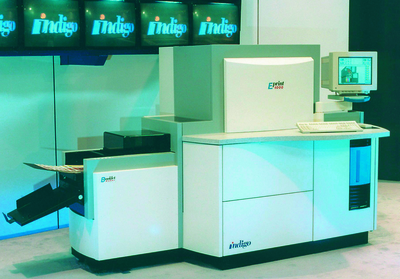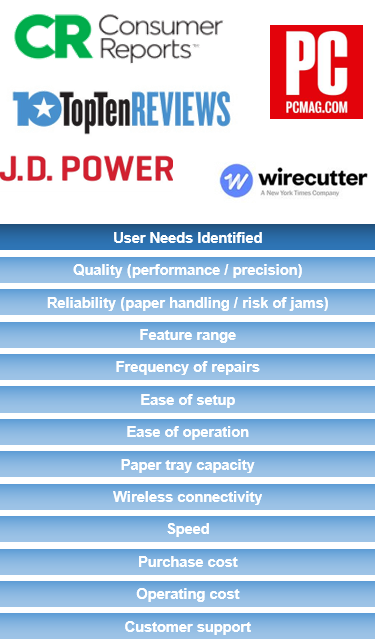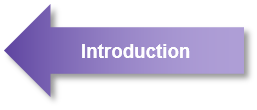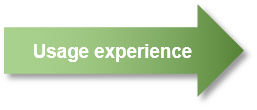Background Information
Digital printer overview and user needs
Digital Printer Overview

Digital printing traces its roots to 1993 when Indigo - which was later purchased by HP - launched its first printer. Since that forerunner, digital printers have undergone a tremendous amount of speciation, and the modern customer can select from a number of different classes of printers based loosely upon the volume, speed, and type of printing that must be accomplished. (Source)
Typical classification dimensions for printers include the technology used to apply pigment to the printed media (laser, LED, and inkjet printers), the ability of the printer to produce two-sided documents without re-feeding paper (simplex vs. duplex printers), the ability of the printer to print in black and white only or in full color, and whether the printer also functions as a scanner, copier, and fax ('multifunction' machines).
Kinoca Minolta Printer

Digital printing traces its roots to 1993 when Indigo - which was later purchased by HP - launched its first printer. Since that forerunner, digital printers have undergone a tremendous amount of speciation, and the modern customer can select from a number of different classes of printers based loosely upon the volume, speed, and type of printing that must be accomplished. (Source)
Typical classification dimensions for printers include the technology used to apply pigment to the printed media (laser, LED, and inkjet printers), the ability of the printer to produce two-sided documents without re-feeding paper (simplex vs. duplex printers), the ability of the printer to print in black and white only or in full color, and whether the printer also functions as a scanner, copier, and fax ('multifunction' machines).
User Needs

User needs for printers are driven by the customer's application. A 2006 study conducted in the United States and Western Europe found that the typical customer requirement for printers defined the typical print job as:
- Consisting of 4 pages
- Is printed from Word
- Is one of 10 jobs printed over the course of the day
- Would be printed from "sleep mode" on the printer
This usage is largely consistent with interview data, which suggests that the typical print job from the Super Printer is 10-20 pages in length, mostly consists of text, and is one of 1 to 5 jobs printed each day.
A number of major consumer product research companies (e.g., Consumer Reports, PC World, JD Power, TopTen Reviews) conduct annual reviews of mainstream printers which are designed to support this typical duty cycle. Among those that report which features are considered to be most important, reliability, ease of setup, operation cost, and output quality rose to the top (with one group, PC World, defining these characteristics as the reason for the consistent high performance of the brand Brother). The full list of features listed by these research companies is listed in the diagram to the left.


